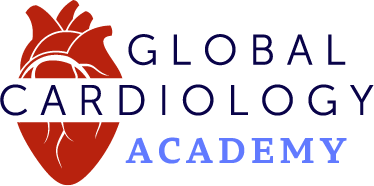Advances in Care for ATTR-CM: Current and Emerging Strategies

Announcer:
You’re listening to Heart Matters on ReachMD. On this episode, we’ll hear from Dr. Gautam Nayak, a cardiologist at Kittitas Valley Healthcare in Ellensburg, Washington. He’ll be discussing current and emerging treatment strategies for transthyretin amyloid cardiomyopathy, or ATTR-CM. Here’s Dr. Nayak now.
Dr. Nayak:
The clinical landscape has really changed, mainly because of the explosion in the treatments for ATTR amyloidosis, and this really kind of boils down to two different types that we have available to us right now. There’s the stabilizers, which prevent misfolding of the TTR protein after it’s formed, and then we have the silencers, which actually prevent the production of transthyretin. In terms of the stabilizers, we have two of them available to us: tafamidis and acoramidis. Both of them are very safe drugs. They don’t really need to be monitored. They have minimal, if any, drug-drug interactions, and they both reduce mortality and improve symptoms in patients with cardiac amyloidosis, ATTR variant.
You also have the silencers. There’s two agents there, patisiran and vutrisiran. Vutrisiran is the second-generation agent. It is better tolerated. And this alters the hepatic TTR synthesis via RNA interference, and that reduces the amyloid deposition. It’s a subcutaneous injection, unlike the stabilizers, which are oral pills, and you get this subcutaneous injection every three months. And these drugs also improve mortality and reduce heart failure hospitalization. And interestingly, approximately 40 percent of patients in the trials with vutrisiran were getting tafamidis, but you saw the same benefits with or without tafamidis. And as we recognize the clinical phenotypes sooner, we’re going to start screening more, and then as you start screening more, you’re going to find more of these patients and get them on therapy a lot quicker.
There’s a few different things that the future holds for ATTR cardiomyopathy. If we can start to screen these patients earlier or start treating them in their preclinical phase—which we really have no trials for, but I see patients that have bilateral carpal tunnel or neuropathy symptoms and they get diagnosed with ATTR—if we can figure out how to get these patients treated sooner before they have cardiac manifestations, I think that’ll be pretty exciting in that preclinical phase.
And then how do we follow these patients and the effects of treatment? If you were on tafamidis, can we follow you over time to see if it’s having an effect, or can we tailor the approach? Are you better for a silencer or a stabilizer? What’s the best approach to take? And can we tailor it over time? And to that end, can we do combo therapy? Can both a silencer and stabilizer work?
And then there’s a lot of future innovation happening with treatment beyond the silencers and the stabilizers. The CRISPR technology with gene editing as an approach to treatment where we can target DNA and permanently modify or repair the TTR gene is super exciting. There’s been a couple studies looking at that. And in one study, they were able to reduce the serum TTR protein levels by 90 percent and improve functional capacity in these patients, so this is a super exciting area in terms of getting patients advanced treatment.
There’s also studies going on with monoclonal antibodies to extract and degrade the amyloid tissue and clear the deposits from the myocardium. This is really exciting because it can target the misfolded TTR that’s embedded in the myocardium but not the circulating TTR. So this is an area that’s got a few different drug categories ongoing. And so I think you’re gonna see that and a couple other different types of drug classes come out, which will be super exciting for the future of treating amyloidosis.
Announcer:
That was Dr. Gautam Nayak talking about advances in care for transthyretin amyloid cardiomyopathy. To access this and other episodes in our series, visit Heart Matterson ReachMD.com, where you can Be Part of the Knowledge. Thanks for listening!
Ready to Claim Your Credits?
You have attempts to pass this post-test. Take your time and review carefully before submitting.
Good luck!
Recommended


Navigating the Vascular Risks of Cancer Therapy: Balancing Cardiac Safety and Tumor Control
Navigating the Vascular Risks of Cancer Therapy: Balancing Cardiac Safety and Tumor Control
Heart MattersNavigating the Vascular Risks of Cancer Therapy: Balancing Cardiac Safety and Tumor Control


Targeting Vascular KCNQ5 Channels: A Promising Strategy for Blood Pressure Control
Targeting Vascular KCNQ5 Channels: A Promising Strategy for Blood Pressure Control
Heart MattersTargeting Vascular KCNQ5 Channels: A Promising Strategy for Blood Pressure Control


Rethinking Hormones: Testosterone and Estrogen in Women’s Heart Health
Rethinking Hormones: Testosterone and Estrogen in Women’s Heart Health
Heart MattersRethinking Hormones: Testosterone and Estrogen in Women’s Heart Health


The LDL-C Gap in Statin-Treated Patients: A Population-Level Problem with Economic Consequences
The LDL-C Gap in Statin-Treated Patients: A Population-Level Problem with Economic Consequences
Heart MattersThe LDL-C Gap in Statin-Treated Patients: A Population-Level Problem with Economic Consequences


